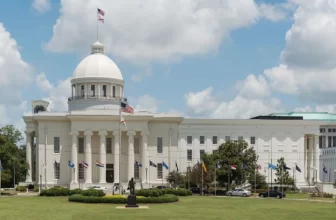In a landmark decision that underscores the convergence of religious freedom and psychedelic research, the Church of the Eagle and the Condor in Arizona has reached a significant settlement with federal agencies.
This agreement not only marks a pivotal moment for the church but also sets a precedent for the legal use of Ayahuasca, a psychedelic brew rooted deeply in indigenous traditions.
The settlement reflects a nuanced recognition of religious practices involving controlled substances, which could have far-reaching implications on both religious rights and the scientific exploration of psychedelics.
The Church of the Eagle and the Condor: A Symbol of Indigenous Rights
The Church of the Eagle and the Condor serves as a vital cultural and spiritual bastion for its members, with its foundations deeply embedded in indigenous traditions and a mission to preserve and practice their ancestral rituals.
Central to these rituals is Ayahuasca, a sacramental brew known for its profound psychoactive properties, which adherents use in ceremonial contexts to facilitate spiritual enlightenment and healing.
The church not only provides a space for these indigenous practices but also symbolizes a broader struggle for recognizing and preserving indigenous religious rights in a modern legal framework.
The Settlement Details: Rights and Regulations
The settlement reached in Arizona grants the Church of the Eagle and the Condor specific rights to import, prepare, and use Ayahuasca within their ceremonial practices. This allowance comes with stringent regulations to ensure public safety, including mandatory health screenings for participants and oversight by the Drug Enforcement Administration (DEA).
These terms illustrate a delicate balance between upholding religious freedoms and enforcing drug control policies, highlighting a significant shift towards accommodating spiritual practices legally that involve controlled substances.
Cultural and Legal Impact of the Settlement
The implications of this settlement extend beyond the Church of the Eagle and the Condor, potentially setting a precedent for how other non-Christian and indigenous religious practices are treated under U.S. law. This case probes the boundaries of the American legal framework concerning controlled substances and religious freedom, challenging existing norms and possibly paving the way for more inclusive policies. It reflects a growing recognition of the cultural dimensions of drug use and poses critical questions about equality in religious practices.
What This Means for Religious Freedom and Psychedelic Research
Looking ahead, the recognition of Ayahuasca’s religious use may catalyze further changes in the legal landscape surrounding psychedelics.
As research continues to explore the therapeutic potentials of psychedelics, the findings could support more arguments for their controlled legal use, influencing not only future religious freedoms but also possible medical applications. This evolving scenario presents an intriguing intersection of law, culture, and science, where each development could significantly impact the broader acceptance and understanding of psychedelic substances.





